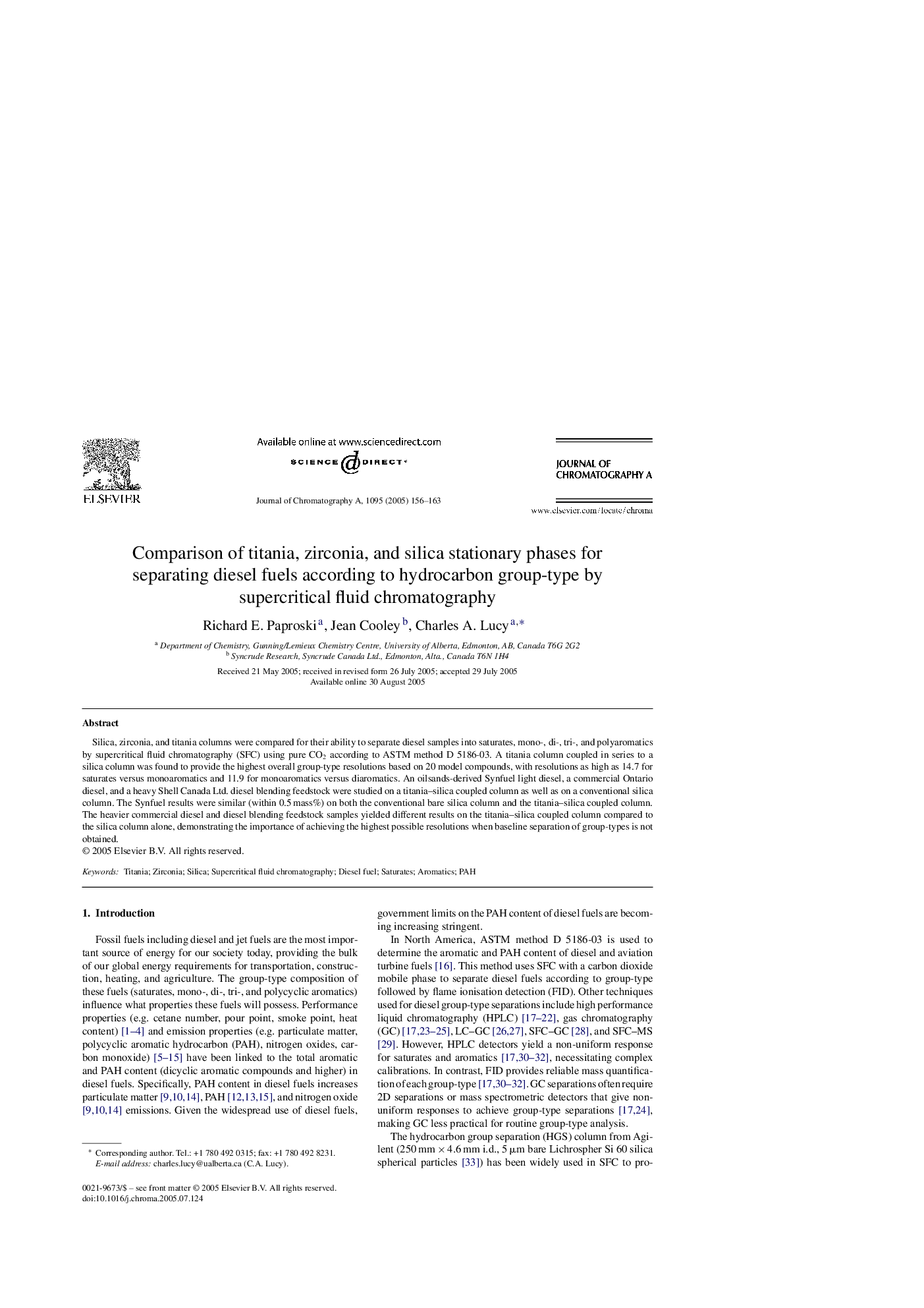| Article ID | Journal | Published Year | Pages | File Type |
|---|---|---|---|---|
| 9748580 | Journal of Chromatography A | 2005 | 8 Pages |
Abstract
Silica, zirconia, and titania columns were compared for their ability to separate diesel samples into saturates, mono-, di-, tri-, and polyaromatics by supercritical fluid chromatography (SFC) using pure CO2 according to ASTM method D 5186-03. A titania column coupled in series to a silica column was found to provide the highest overall group-type resolutions based on 20 model compounds, with resolutions as high as 14.7 for saturates versus monoaromatics and 11.9 for monoaromatics versus diaromatics. An oilsands-derived Synfuel light diesel, a commercial Ontario diesel, and a heavy Shell Canada Ltd. diesel blending feedstock were studied on a titania-silica coupled column as well as on a conventional silica column. The Synfuel results were similar (within 0.5Â mass%) on both the conventional bare silica column and the titania-silica coupled column. The heavier commercial diesel and diesel blending feedstock samples yielded different results on the titania-silica coupled column compared to the silica column alone, demonstrating the importance of achieving the highest possible resolutions when baseline separation of group-types is not obtained.
Related Topics
Physical Sciences and Engineering
Chemistry
Analytical Chemistry
Authors
Richard E. Paproski, Jean Cooley, Charles A. Lucy,
